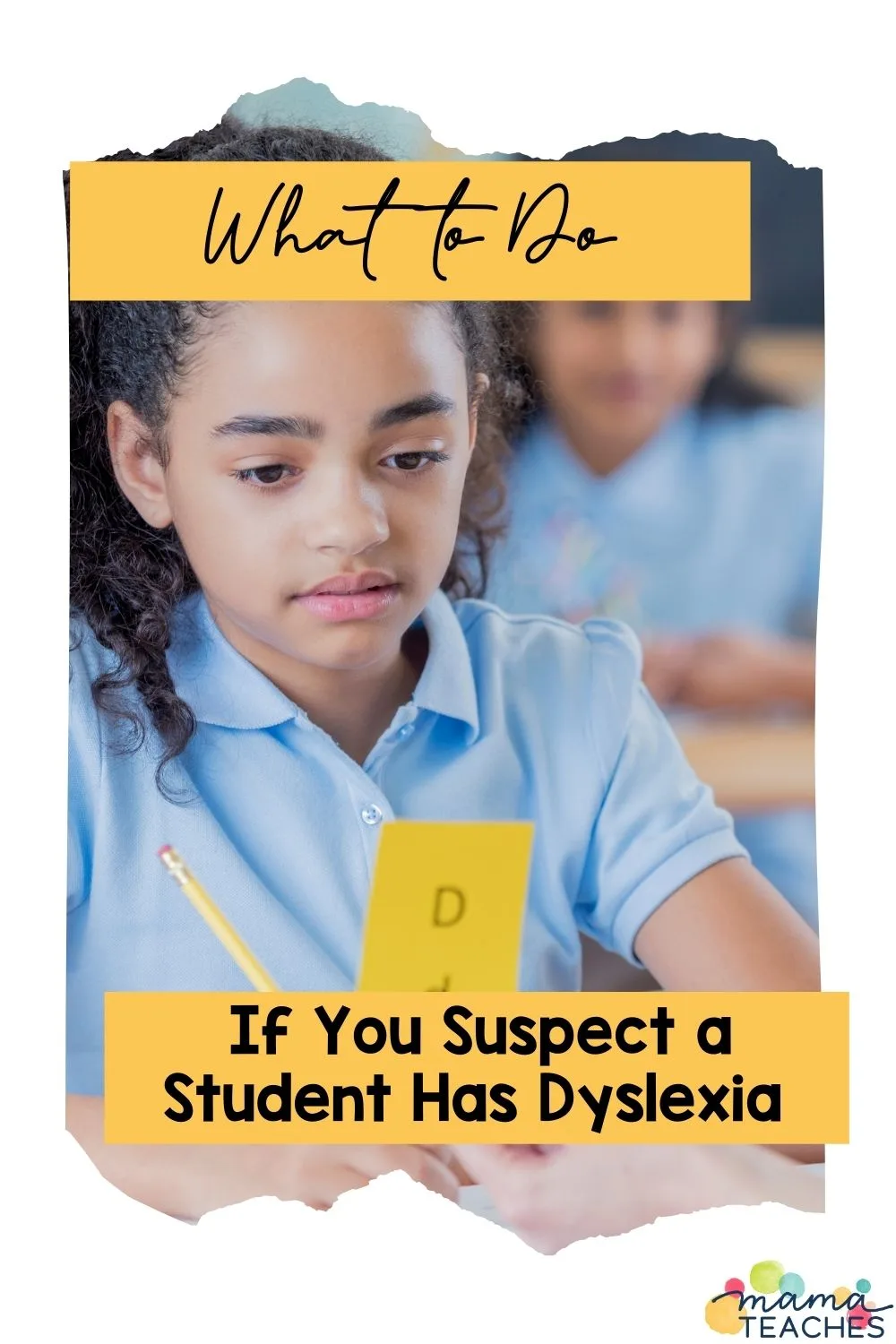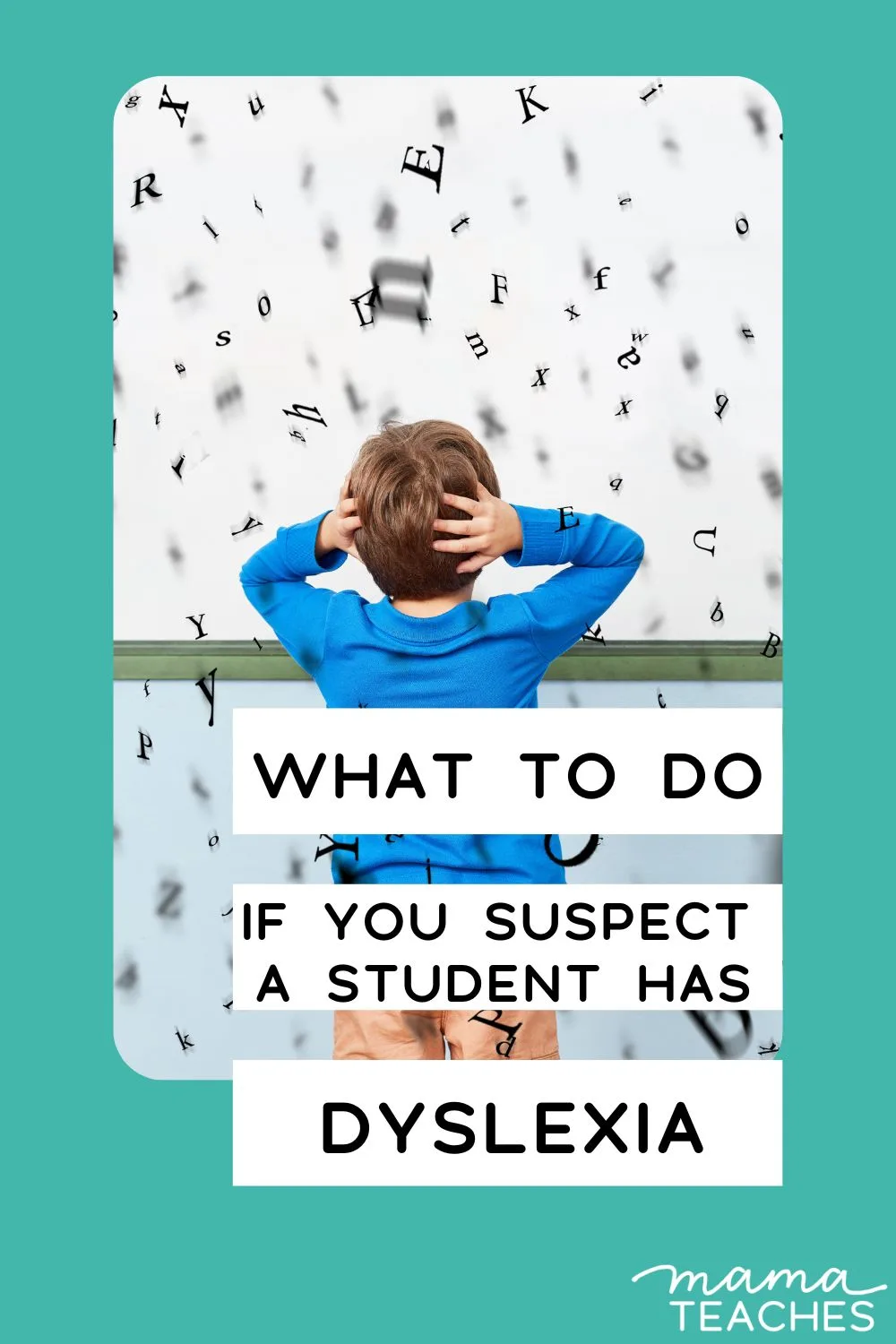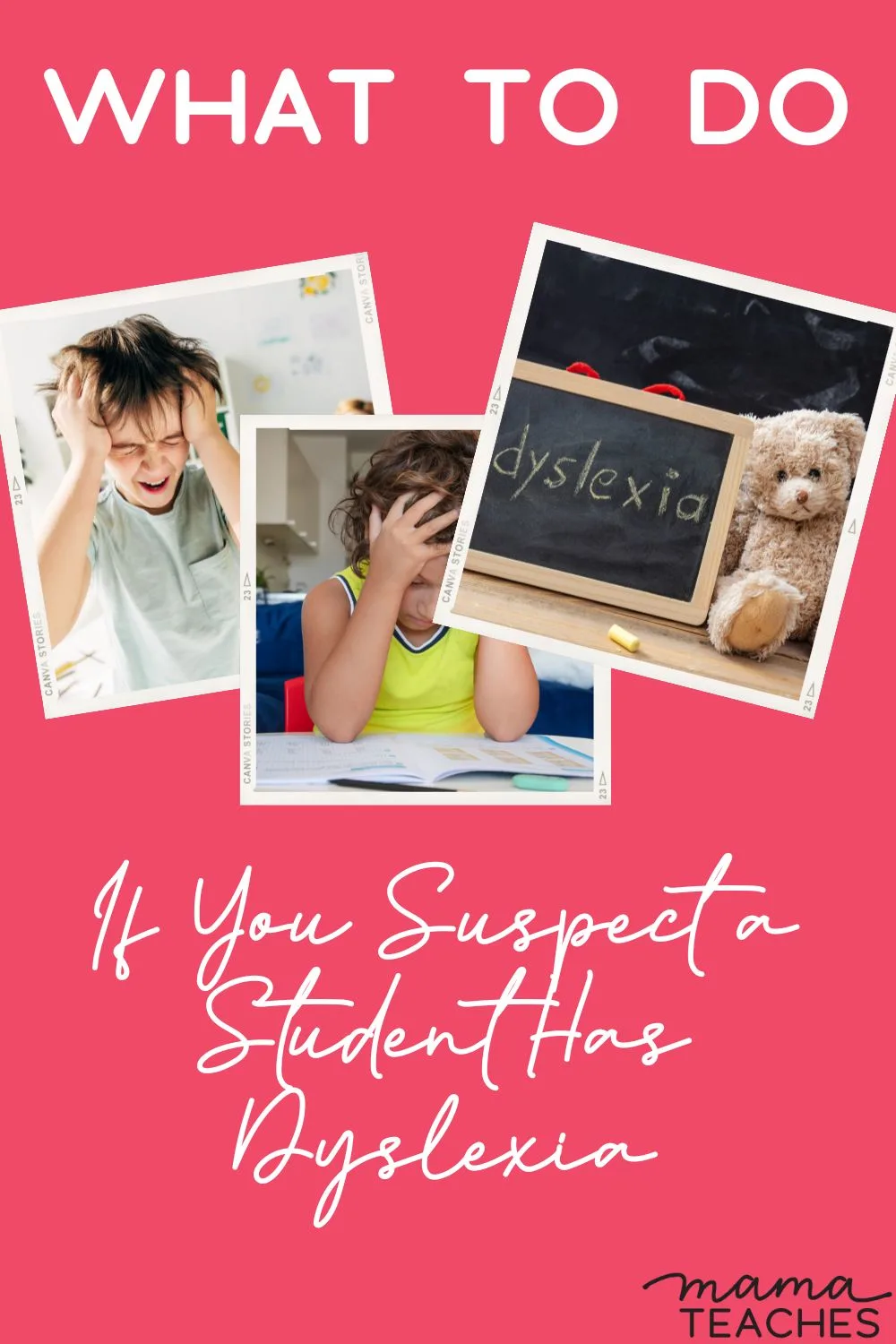Do you suspect that a student has dyslexia? Check out these common signs of dyslexia, and take these steps to help your student.

What Are Signs of Dyslexia?
Dyslexia is a relatively common learning difference that affects the association of letters with sounds.
The difficulty of relating letters to sounds affects more than just reading.
It can also impact spelling, second language learning, and certain math problems.

This article contains affiliate links to things that you might like.
Here are some possible signs of dyslexia.
A student may exhibit some or all of these signs:
Difficulty Reading
This one is the most obvious.
A student with dyslexia may read slowly or with many inaccuracies.
They may avoid decoding words in favor of guessing them.
They may have difficulty recognizing and recalling sight words.
Because they focus so much on decoding, a student with dyslexia may have trouble with reading comprehension.
In some cases, students with dyslexia will avoid reading altogether.
Spelling Challenges
Dyslexia can also impact a student’s ability to spell.
They may have trouble recalling spelling rules.
They may chronically misspell words (even phonetically rule-abiding words) and misspell the same word differently.
Writing Issues
A student with dyslexia may also have illegible handwriting and poor letter formation (dysgraphia and dyslexia frequently co-occur).
They may also struggle to organize their thoughts before writing and to retell events in sequence.
You may notice a limited vocabulary in their writing (they stick to the words they know well).

Struggles with Phonological Awareness
Dyslexia can impact a student’s ability to separate words into syllables.
Rhyming can prove to be a challenge.
They may struggle to hear the individual sounds in words (the component sounds).
Letter Sequencing and Reversals
A person with dyslexia may have trouble putting letters, words, or symbols in sequence.
You may notice they write letter reversals: b for d (and vice versa) and p and q.

Steps to Take If You Suspect a Student Has Dyslexia
If you suspect a student has dyslexia, here are some steps you should take.
Document Your Observations
Look at the list above, and write down your observations of the student’s struggles.
Be as specific as possible. List the task assigned and how the student responded.
When communicating with staff and the student’s parents, you will need these notes.
Consult with Your Colleagues
Your colleagues are a wealth of information.
If other teachers have this student in their class (or a teacher had the student the previous year), ask them about their observations.
Even if you are the only teacher instructing the student, you can discuss your observations with your colleagues.
They may have insights and advice about strategies you can implement.

Talk to the Parents
It is vital to keep the student’s parents in the loop.
Remember, you are not qualified to diagnose, so avoid labeling the student. Do not say, “Your student has dyslexia.”
Instead, talk about what you have observed and recommend testing or evaluation. Give the parents the contact information they may need.
You can also inform them of strategies you plan to adopt to help the student.
Give the parents ideas on how they can best support their student from home.
Refer the Student for Assessment
It is essential that the student receives an accurate diagnosis, so testing is a necessary step.
Talk with the school psychologist or specialist (whoever does testing for your school), and get the student on the list to be evaluated.
Develop the IEP
If the student returns with a diagnosis, work with the school psychologist to develop an IEP (individual education plan).
The IEP will be tailor-made for the student, including assistive technologies, academic support, and accommodations.

Educate Yourself
The more you know about dyslexia (and other learning differences), the better you can help your students.
Start here. Read about dyslexia and its often co-occurring disorders.
Look through these dyslexia resources for teachers.
Check out these strategies to help students with dyslexia.
Implement Strategies Now
The wait for testing can be long.
The good news is that you can implement strategies now to help all your students, whether or not they have dyslexia.
Implement ear reading at a reading center (or teach students how to do it). Encourage audiobooks.
Look into text-to-speech technology at your computer stations.
Use multi-sensory teaching methods. Don’t rely solely on written communication. Use visual aids, props, and hands-on activities.
Offer extended time for tests and in-class writing assignments.
Break information into manageable chunks and check for understanding as you go.

Wondering If a Student Has Dyslexia
If you notice a student has some signs of dyslexia, don’t wait to act.
Prompt and proper diagnosis can make a world of difference for that student.
Work through the steps in this article to help your student right now!
